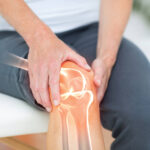Lower back pain is a common ailment that affects millions of people worldwide. Whether it’s due to a sedentary lifestyle, poor posture, or an underlying health condition, finding ways to alleviate this discomfort is crucial for maintaining quality of life. Before diving into the exercises that can help and those to avoid, let’s understand why lower back pain happens.
Understanding Lower Back Pain: Causes and Contributors
Lower back pain can stem from a variety of factors, often involving more than one component of the back. Here are some common causes:
Muscle or Ligament Strain
Repeated heavy lifting or a sudden awkward movement can strain back muscles and spinal ligaments. Continuous strain on your back can cause chronic aches if you’re in poor physical condition.
Bulging or Ruptured Disks
Disks act as cushions between the bones (vertebrae) in your spine. The soft material inside a disk can bulge or rupture and press on a nerve, leading to back pain.
Arthritis
Osteoarthritis can affect the lower back. In some cases, arthritis in the spine can lead to a narrowing of the space around the spinal cord, a condition called spinal stenosis.
Skeletal Irregularities
A condition where your spine curves to the side (scoliosis) can lead to back pain, but generally only if the scoliosis is severe.
Osteoporosis
Your spine’s vertebrae can develop painful fractures if your bones become porous and brittle.
Lifestyle Factors
Poor posture, sedentary lifestyle, and improper lifting techniques can contribute significantly to lower back pain.
Psychological Factors
Stress, depression, and anxiety can affect how the body perceives pain, often exacerbating physical discomfort in the lower back.
Understanding the underlying cause of your back pain is crucial in choosing the right exercises and avoiding those that may worsen your condition. It’s always recommended to consult with a healthcare professional for a proper diagnosis and tailored treatment plan.
Now, let’s explore the exercises that can benefit those suffering from lower back pain and highlight the ones to avoid.
- Partial Crunches: A person lying on their back, knees bent, feet flat on the ground. They have their hands crossed over their chest and are lifting their upper body slightly off the ground.
- Hamstring Stretches: An individual is lying on their back with one leg extended upward, the foot held by a towel that is looped around it. The other leg is flat on the ground, bent at the knee.
- Wall Sits: A person standing with their back against a wall, feet shoulder-width apart, and about a foot away from the wall. Their knees are bent at a 90-degree angle, as if sitting in an invisible chair.
- Bird Dog: On hands and knees, one arm is extended forward and the opposite leg is extended backward, body forming a straight line from extended hand to extended foot.
- Pelvic Tilts: An individual lying on their back with knees bent and feet flat on the floor. They are gently arching their lower back and pressing their stomach upwards.
- Bridging: Lying on their back with knees bent, feet flat on the floor, and arms by their sides, the person lifts their hips towards the ceiling, forming a straight line from knees to shoulders.
- Knee-to-Chest Stretch: A person lying on their back, one knee pulled into the chest while the other leg is extended straight on the ground.
- Cat-Cow Stretch: On hands and knees, the person arches their back upwards (cat position) and then dips it downwards, lifting their head and tailbone (cow position).
- Child’s Pose: Sitting on their heels with knees together, the person bends forward with arms extended in front, resting their forehead on the ground.
- Lateral Leg Lifts: Lying on one side, legs together, the top leg is lifted about 18 inches off the other leg, which is slightly bent for stability.
- Swimming: An image of a person swimming in a pool, showcasing a stroke that emphasizes back muscles, like freestyle or backstroke.
3 Exercises to Avoid for Lower Back Pain
- Toe Touches: A person standing and bending forward trying to touch their toes, which illustrates the strain this exercise can put on the lower back.
- Sit-ups: Showing someone in the traditional sit-up position, highlighting the potential stress on the lower back.
- Leg Lifts: An individual lying on their back, lifting both legs together off the ground, demonstrating the pressure this exercise can put on the spine.
Important Considerations Before Exercising with Lower Back Pain
Engaging in exercise when you have lower back pain requires careful consideration to ensure safety and effectiveness. Here are some vital points to keep in mind:
Consult with a Healthcare Professional
Before starting any exercise program, it’s crucial to consult with a healthcare professional, especially if you have chronic back pain or a specific diagnosis. This step is essential to ensure that you don’t engage in activities that could exacerbate your condition.
Start Slowly and Listen to Your Body
Begin with low-impact exercises and gradually increase intensity. Pay close attention to your body’s responses. If an exercise causes pain or discomfort, stop immediately. Pain is a signal from your body to take it easy.
Warm-Up and Cool-Down
Warming up before exercising is important to prepare your muscles and spine for physical activity. Similarly, cooling down helps to gradually bring your body back to a resting state, reducing the risk of muscle stiffness or injury.
Maintain Proper Form
Good form is crucial to prevent injury and get the most benefit from any exercise. If you’re unsure about the correct form, consider consulting a physical therapist or a certified trainer.
Incorporate a Balanced Routine
A balanced exercise routine that includes strength training, flexibility, and aerobic activities can provide comprehensive benefits for your back and overall health.
Stay Hydrated
Dehydration can affect muscle function and recovery. Ensure you’re well-hydrated before, during, and after your workout.
Consider Activity Modifications
If certain movements or positions cause discomfort, modify them to suit your capability. Many exercises can be adjusted to accommodate your pain threshold and flexibility.
Regularly Assess Your Pain
Keep track of your pain levels and any changes in your symptoms as you exercise. This will help you understand what works and what doesn’t, allowing for adjustments in your routine.
Avoid Overexertion
Overdoing exercises, especially when starting a new routine, can lead to increased back pain and setbacks in your recovery.
Focus on Core Strengthening
The core muscles play a significant role in supporting the spine. Incorporating core-strengthening exercises can help reduce the strain on your back.
By considering these factors, you can create an exercise routine that not only helps in alleviating lower back pain but also contributes to your overall well-being.
Conclusion
Dealing with lower back pain can be challenging, but incorporating these exercises into your routine can offer relief and help strengthen your lower back. Always consult with a healthcare professional before starting any new exercise regimen, especially if you have an existing back condition or experience severe pain. Remember, listening to your body and understanding its limits is key to a safe and effective workout.








